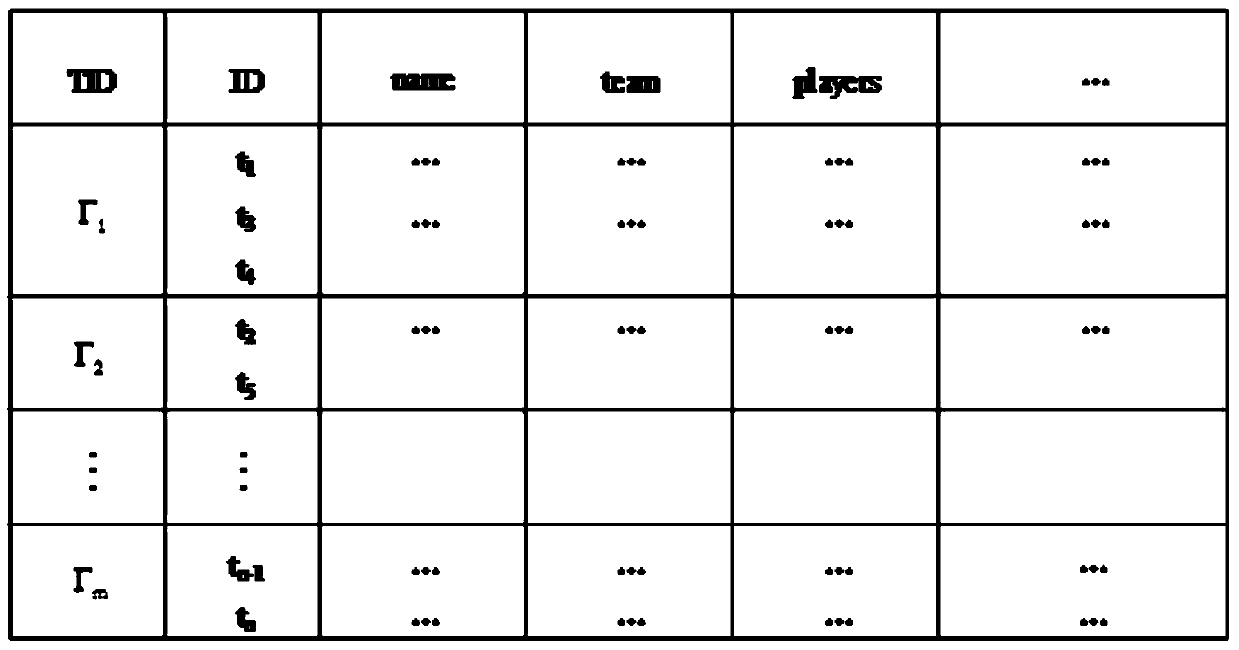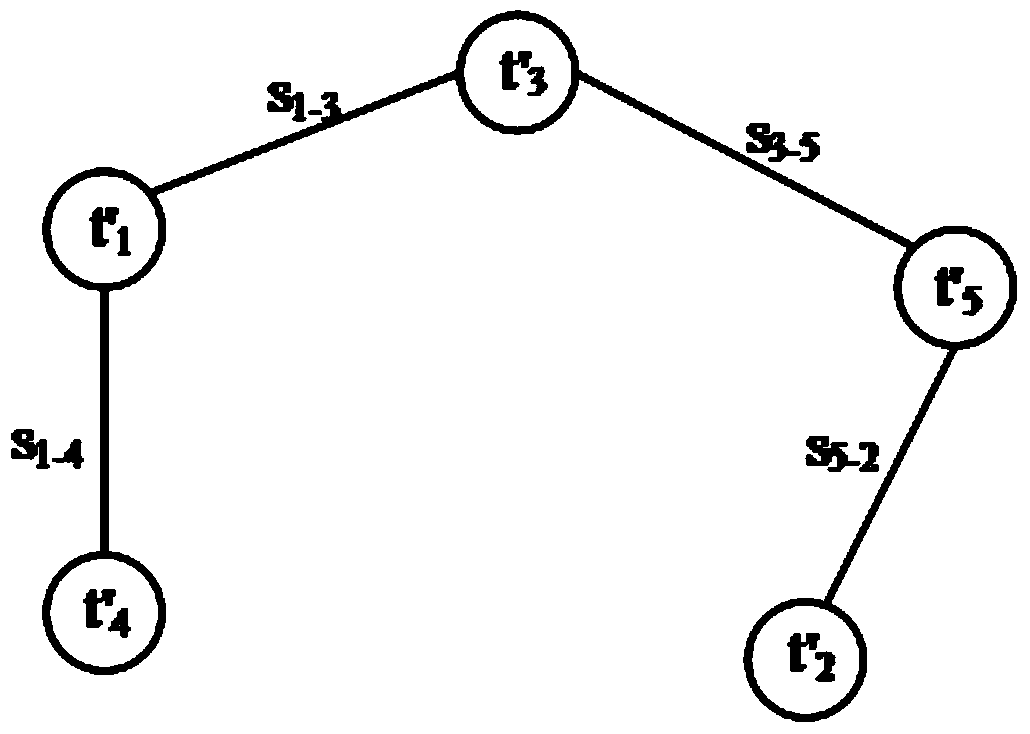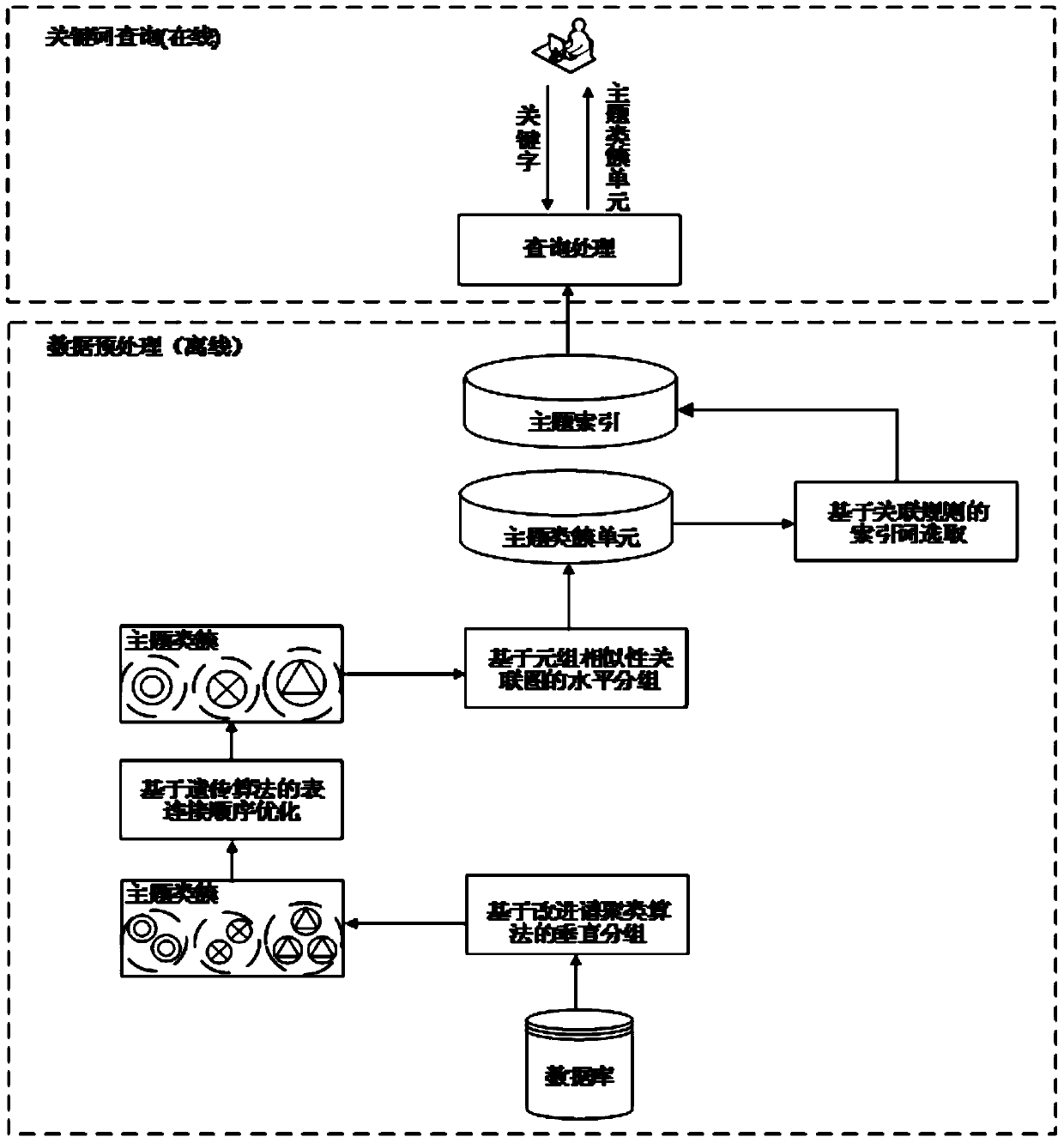A Keyword Query Method Based on Topic Cluster Unit in Relational Database
A database and keyword technology, applied in the field of information retrieval, can solve the problems of unfavorable users finding the desired query answer, not considering the query efficiency of large-scale relational databases, and the large scale of tables, etc.
- Summary
- Abstract
- Description
- Claims
- Application Information
AI Technical Summary
Problems solved by technology
Method used
Image
Examples
specific Embodiment approach 1
[0066] The specific embodiment one, the keyword query method based on the subject cluster unit in a kind of relational database described in the present embodiment, carries out according to the following steps:
[0067] 1. The construction process of thematic cluster units;
[0068] 1.1. Vertical grouping based on data table characteristics and query logs;
[0069] 1.2. Propose an optimization scheme for the table connection sequence in the theme cluster;
[0070] 1.3. Horizontal grouping based on the association diagram of thematic cluster tuples;
[0071] 2. Establish an index optimization mechanism based on association rules;
[0072] 3. Return the query result to the user.
[0073] This embodiment includes the following beneficial effects:
[0074] 1. Propose an offline query method based on topic cluster unit, which is suitable for keyword query on large-scale relational database;
[0075] 2. Constructed a new type of data structure - theme cluster unit. The data ta...
specific Embodiment approach 2
[0078] Embodiment 2. This embodiment is a further description of the keyword query method based on the subject cluster unit in a relational database described in Embodiment 1. Step 1. The method based on data table characteristics and query logs described in Step 1. The specific process of vertical grouping is as follows: this application adopts the method of constructing the similarity matrix between tables, and constructs the initial input matrix from two aspects of table characteristics, including topological closeness between tables, content similarity between tables and query logs, and the vertical grouping method will The relational database D and user query logs are used as input, and a set of topic clusters are used as output. The specific process is as follows Figure 4 As shown, the vertical grouping method can be roughly divided into the following three modules: input module, similarity matrix building module and output module. The input module takes the relational ...
specific Embodiment approach 3
[0121] Specific Embodiment 3. This embodiment is a further explanation of the keyword query method based on the subject cluster unit in a relational database described in Specific Embodiment 1 or 2. Step 1.2 proposes the table in the subject cluster. The specific process of the connection order optimization scheme is as follows:
[0122] In order to avoid complex table join operations during the query process, the topic cluster C needs to be i =(T 1 , T 2 ,...,T n n tables T in ) 1 , T 2 ,...,T n Connect to get the comprehensive table T' i . Existing methods only perform breadth-first traversal to join tables according to the primary-foreign key relationship. In a large database, which usually contains hundreds or even thousands of data tables, it takes a lot of time to use the above method, and the preprocessing efficiency is greatly affected. Aiming at this problem, the present invention designs table connection sequence optimization scheme based on genetic algorith...
PUM
 Login to View More
Login to View More Abstract
Description
Claims
Application Information
 Login to View More
Login to View More - R&D Engineer
- R&D Manager
- IP Professional
- Industry Leading Data Capabilities
- Powerful AI technology
- Patent DNA Extraction
Browse by: Latest US Patents, China's latest patents, Technical Efficacy Thesaurus, Application Domain, Technology Topic, Popular Technical Reports.
© 2024 PatSnap. All rights reserved.Legal|Privacy policy|Modern Slavery Act Transparency Statement|Sitemap|About US| Contact US: help@patsnap.com










